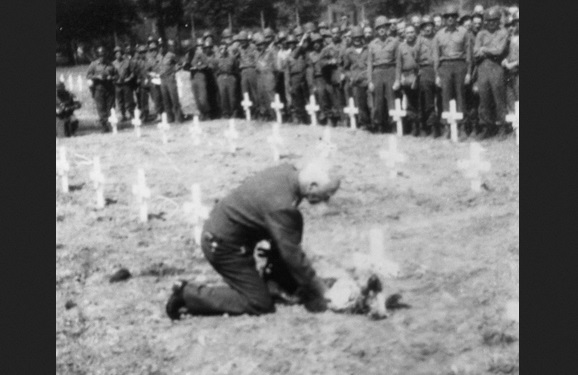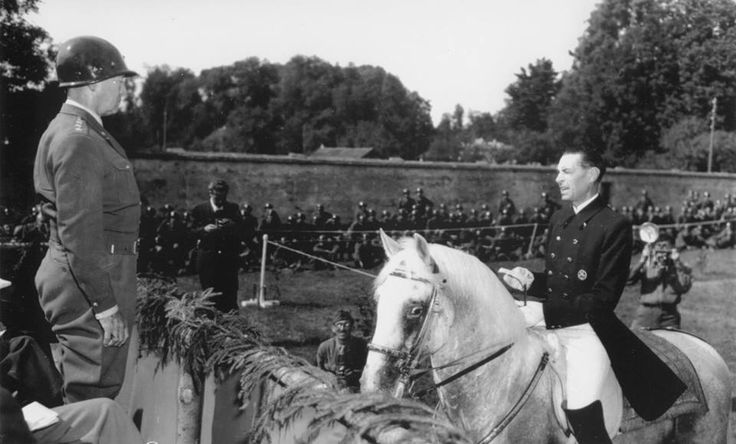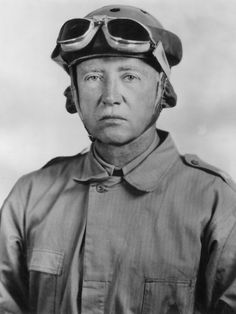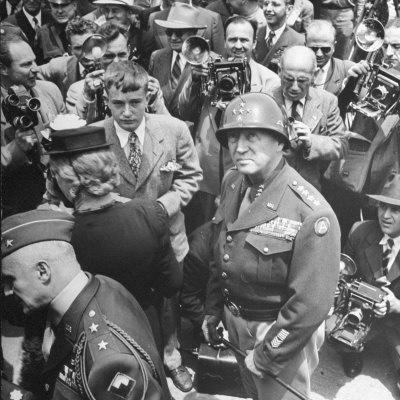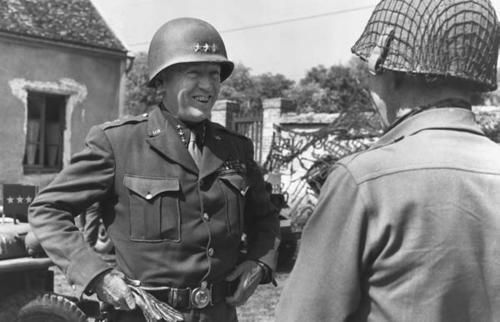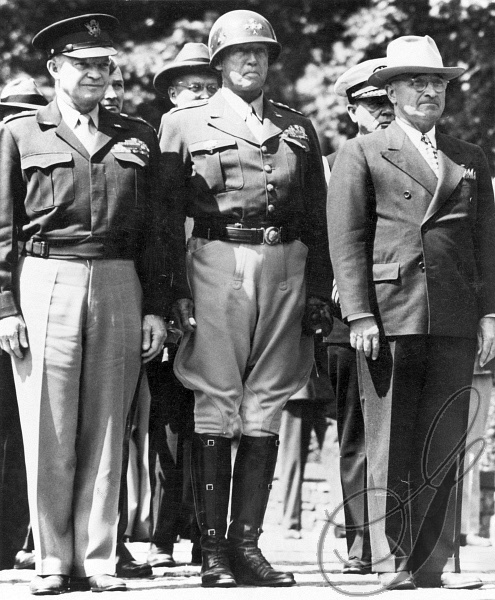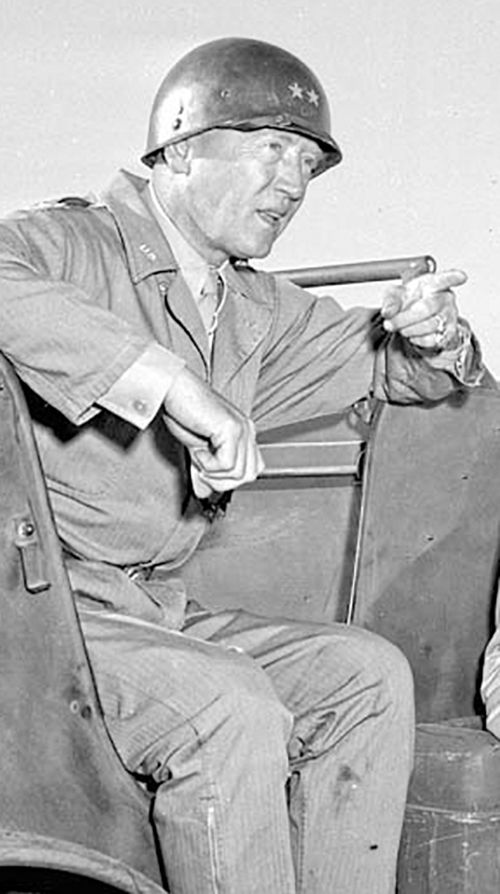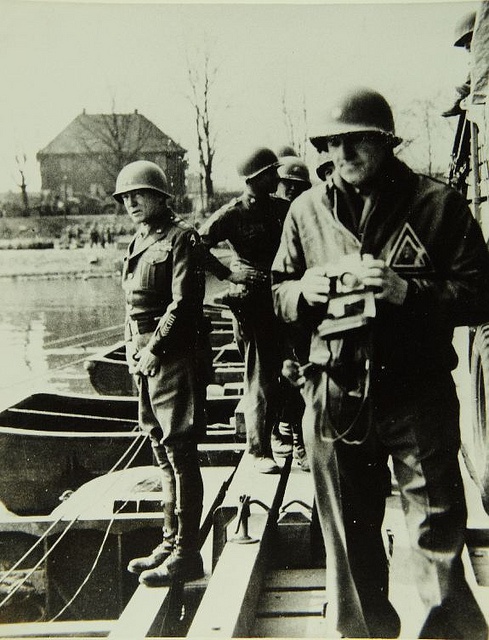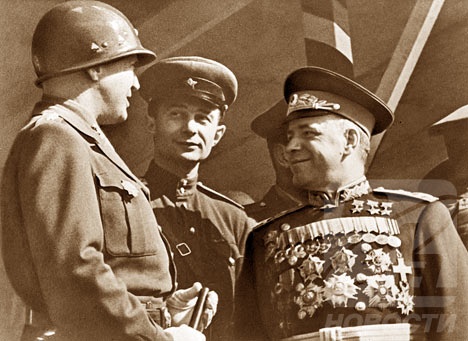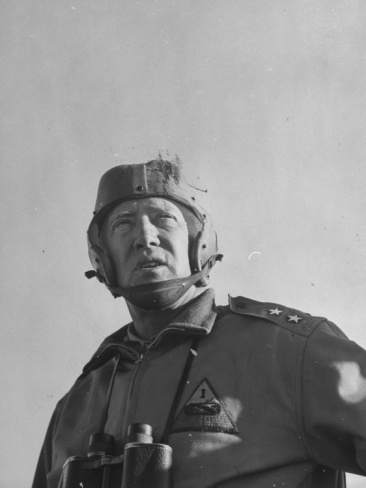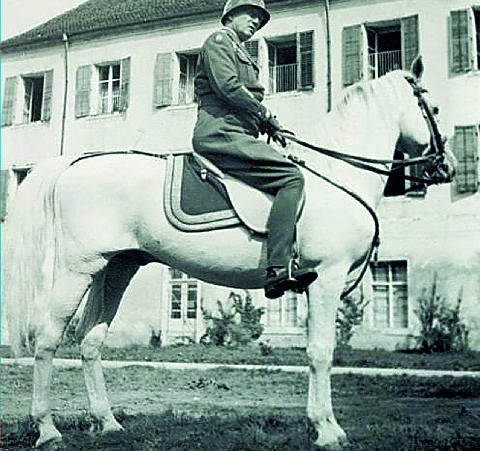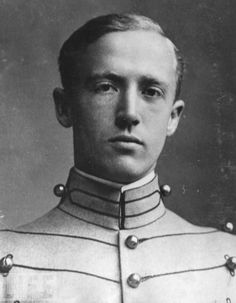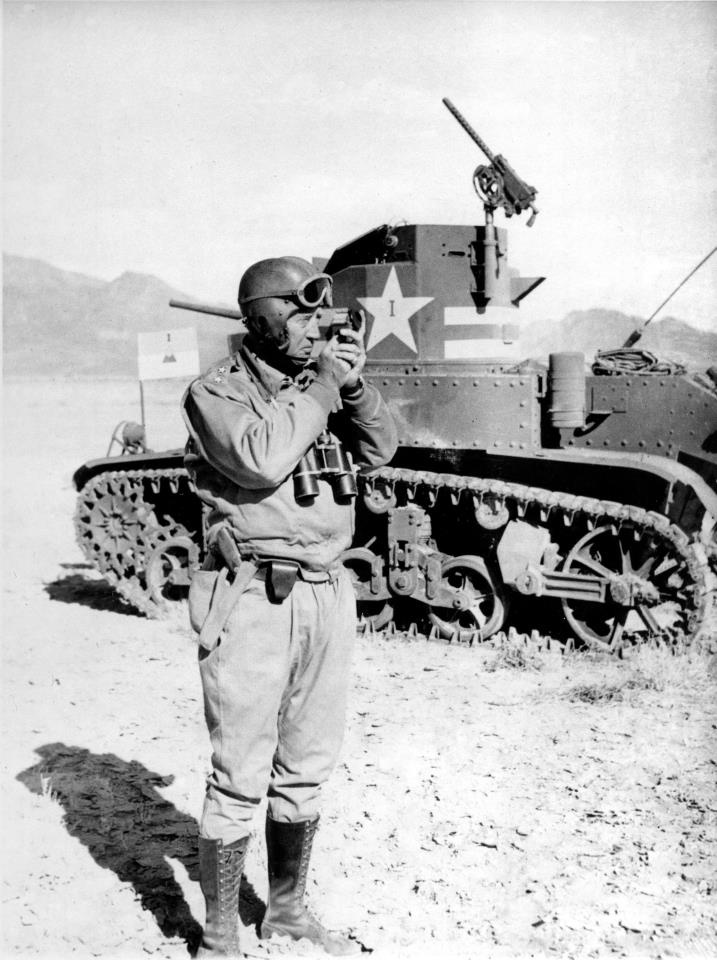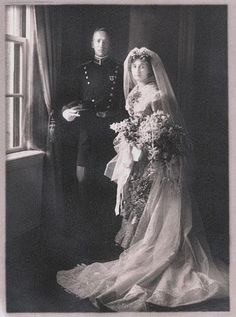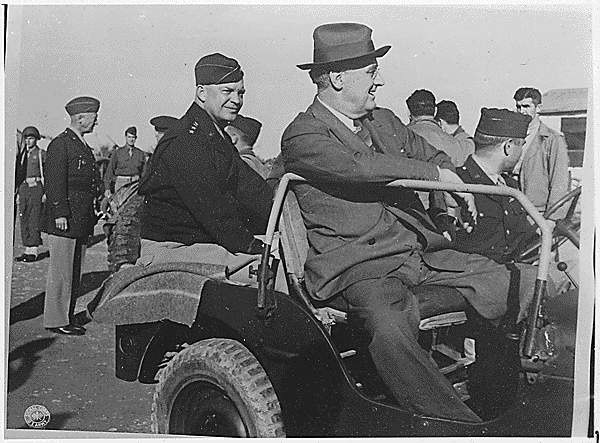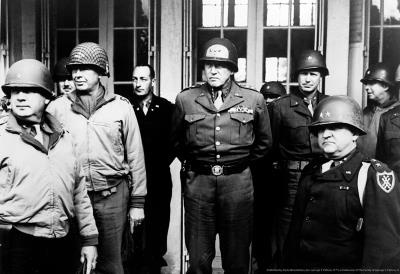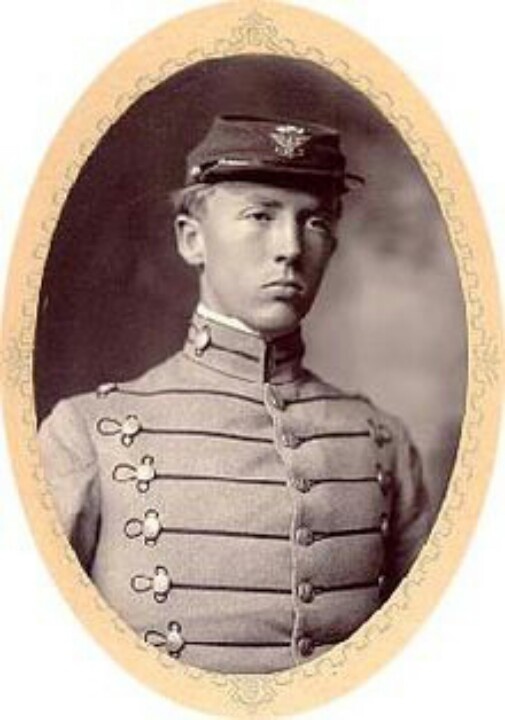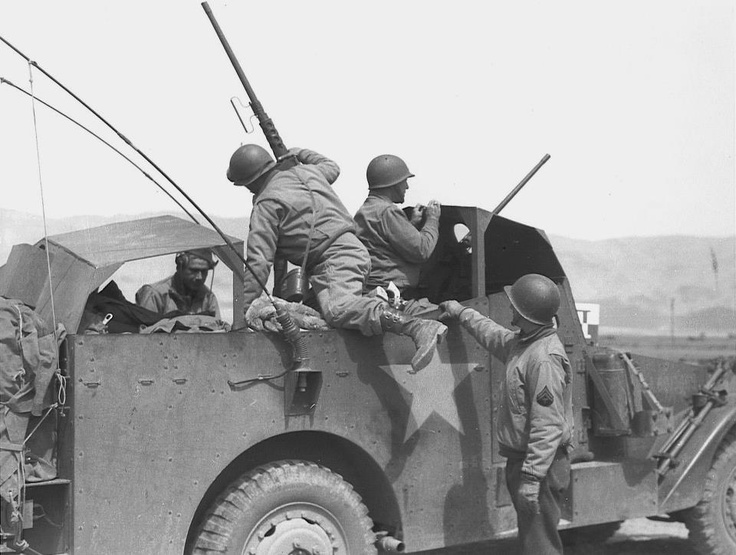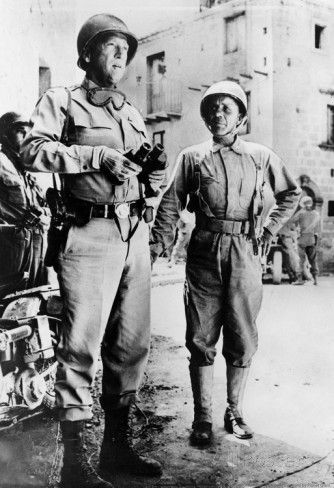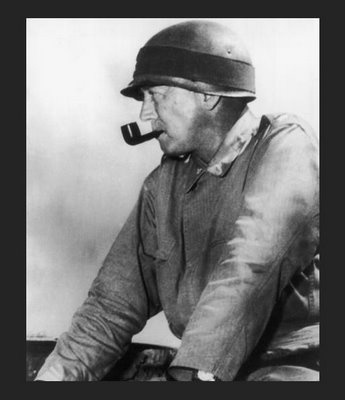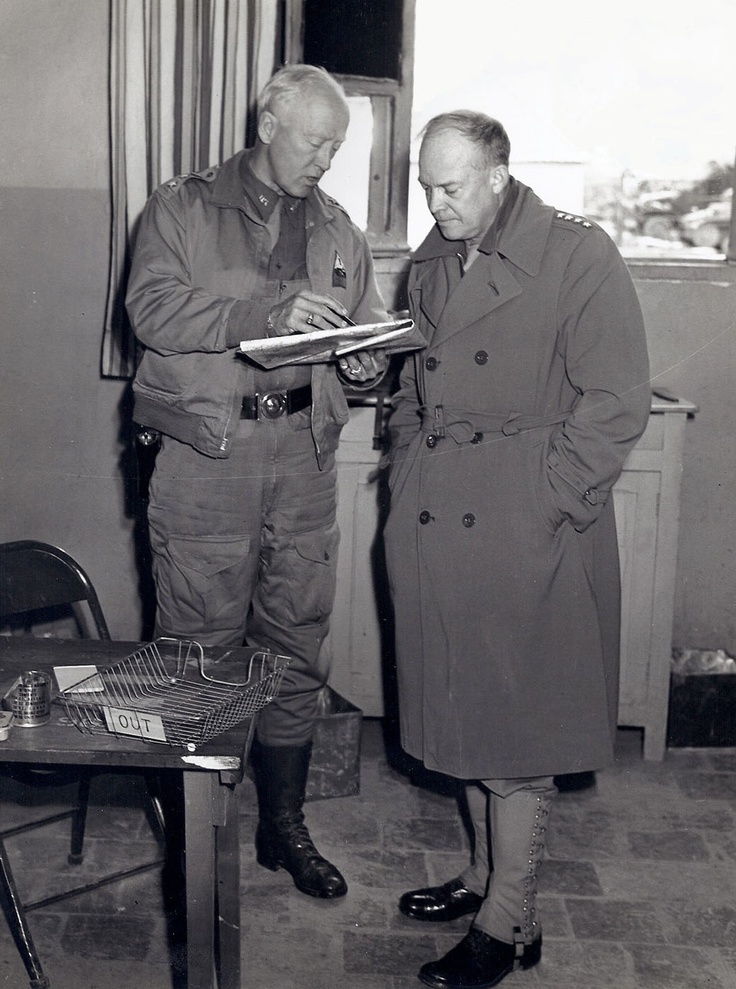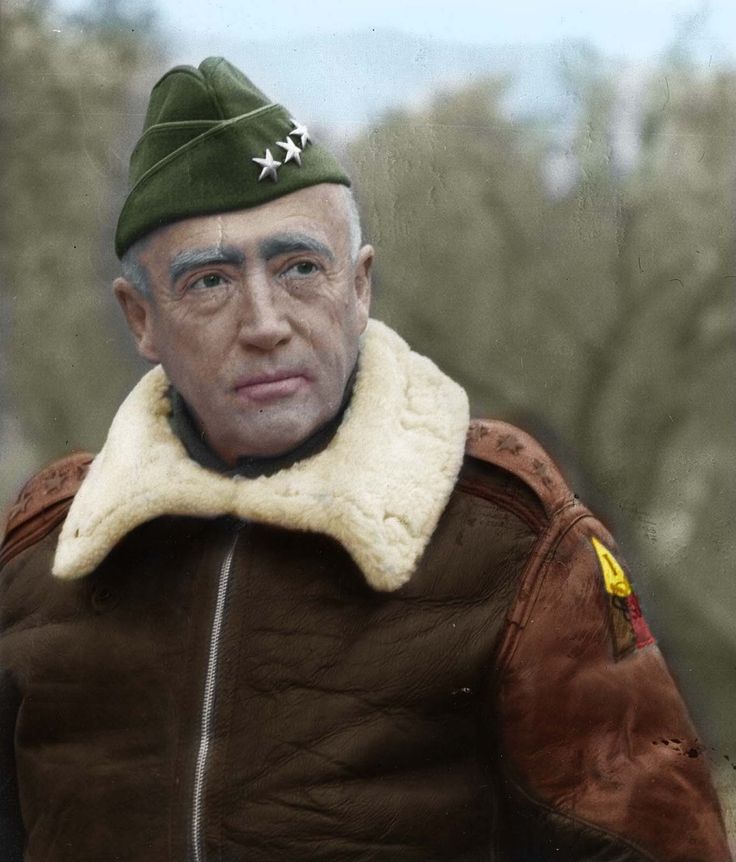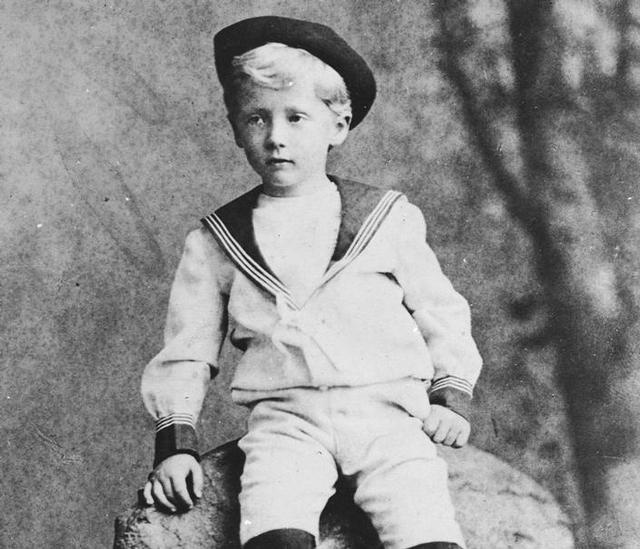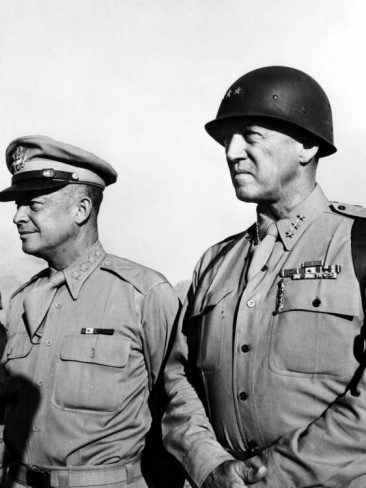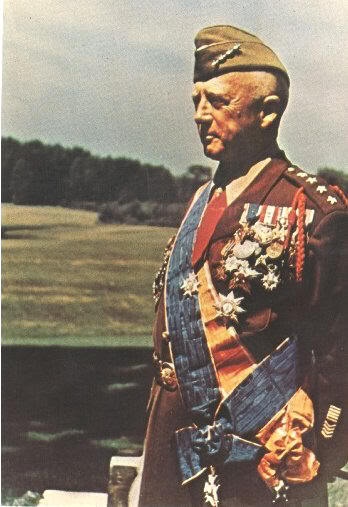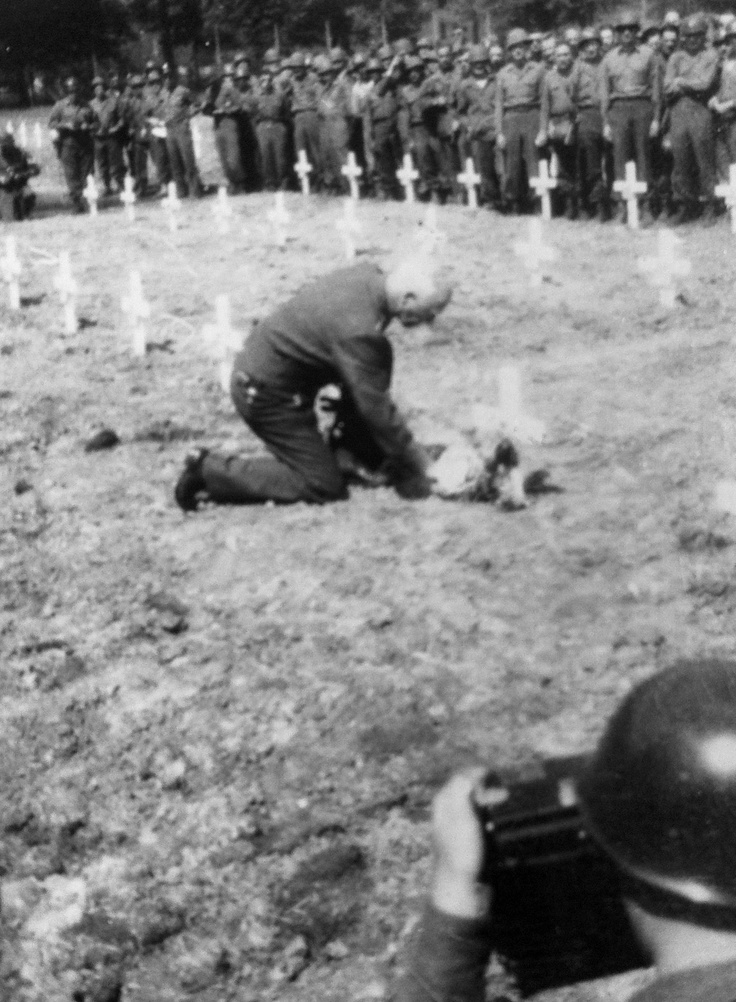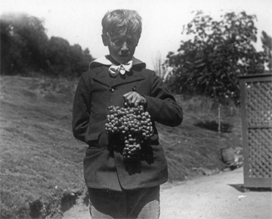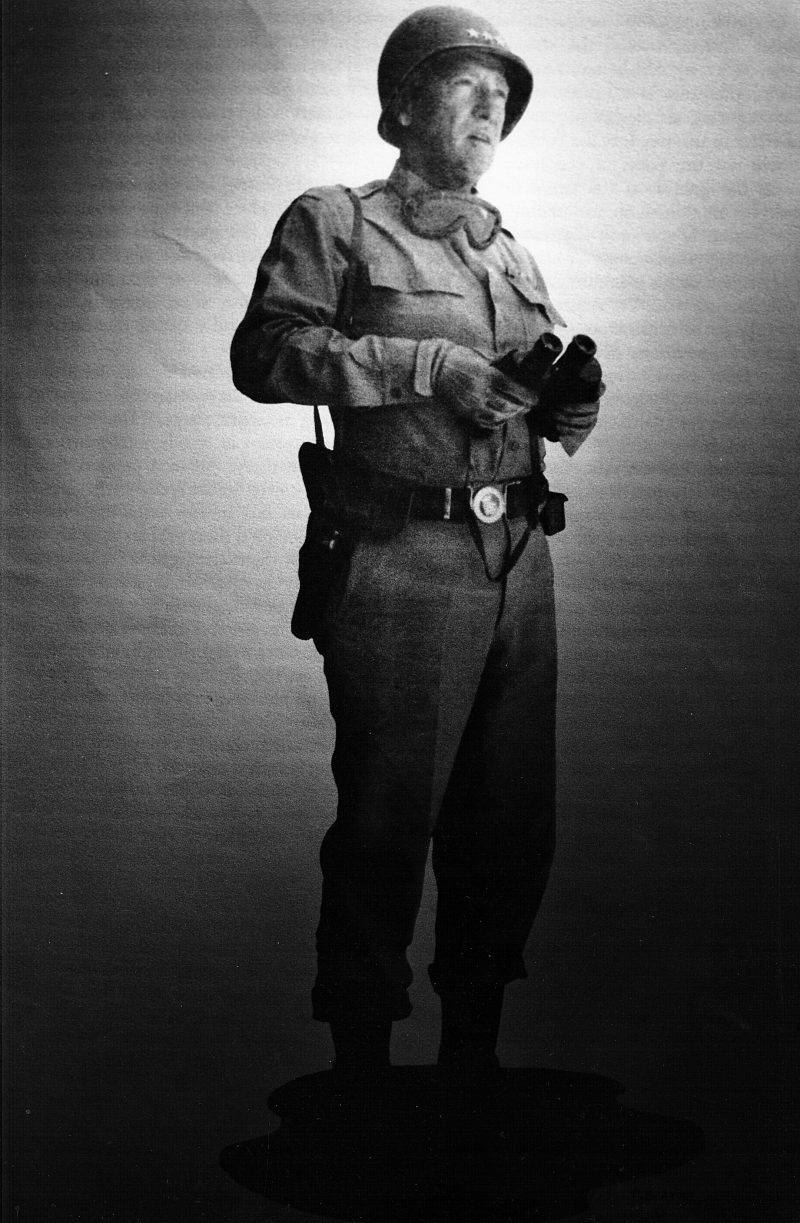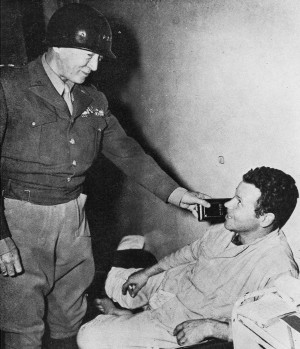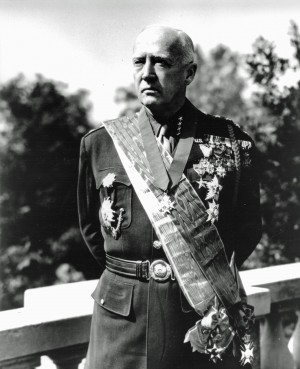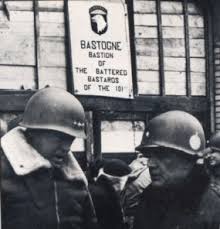George Smith Patton Jr was born on the 11th November, 1885, into a family with a long record of military service. He saw action in the Pancho Villa Expedition of 1916 and served with American forces in the First World War, notably at the tank battle of Cambrai and the Meuse-Argonne offensive. It was his roles in the Mediterranean and European theatres of the Second World War however, that he demonstrated his extraordinary ability as a military commander.
America’s entry into the Second World War was precipitated by the Japanese bombing of Pearl Harbour on the 7th of December, 1941, and the subsequent German declaration of war on December 11th. The Allied forces of Britain and America moved to clear the Axis forces of Germany and Italy from North Africa in order to control the Mediterranean sea lanes and launch an invasion of southern Europe.
The task began with Operation Torch in November, 1942, and Patton was given command of the Western Task Force which had the task of effecting landings in Morocco in the region of Casablanca, while the Central Task Force and Eastern Task Force assaulted Oran and Algiers, respectively.
The enemy, Vichy French soldiers, were soon overcome by the Allies but they were dealt a heavy blow by the Afrika Korp at the Kasserine Pass. Much of the blame for the Kasserine Pass debacle was laid at the door of the commander of II Corp, Lloyd Fredendall and he was replaced by Patton. Patton immediately began to reintroduce a martial and disciplined attitude into II Corp, rigorously insisting upon all aspects of military protocol.
So successfully did Patton infuse his own indomitable fighting spirit into his soldiers that, after a mere 10 days had passed since he had assumed command, he was able to launch an assault upon Gafsa and, at the battle of El Guettar, routed a combined German and Italian armoured assault.
Following upon his success in North Africa, Patton was given command of the 7th Army and tasked to assist the British under Montgomery with the invasion of Sicily. On 10th July, 1943, American soldiers seized three beachheads and then succeeded in repelling counter attacks from the elite German Herman Goering Division. During these counter attacks, Patton personally saw action as he stood shoulder to shoulder with his men and encouraged them to resist the enemy assaults.
Patton’s drive and initiative ensured that, by 18th August, the Allies had conquered the vitally strategic island of Sicily which would provide a springboard for the invasion of the Italian mainland. Despite this victory, however, over 100 000 Axis troops, as well as vehicles, tanks and ammunition were evacuated from the island before being cut off from their escape route across the Straits of Messina.
Following a highly publicized slapping incident on an American private during the Sicilian campaign, George Patton was not given command of a combat force for 11 months. In January 1944, he was placed in charge of the wholly inexperienced and raw recruits that comprised the United States 3rd Army which was stationed in England. With his characteristic zeal and passion, Patton undertook the task of preparing these greenhorns for Operation Overlord – the invasion of German occupied western Europe.
On the 6th June, 1944, at 05H45, an enormous naval barrage from the massed allied armada signaled the assault upon the French mainland, and this was followed by amphibious landings. Despite over 10, 000 casualties (dead and wounded) in the first day of the invasion, the Allies secured a safe beachhead and then proceed to advance across France. In July, 1944, Patton was flown over from England and rejoined his Third Army which then proceed to assist in the closing of the Falaise Pocket, which led to the capture of several hundred thousand enemy combatants. Patton drove his men on relentlessly, leaving the Germans no time to regroup and organize defensive positions.
In December 1944, Field Marshall Von Rundstedt assaulted the allied lines with 250 000 men. At Bastogne, American forces were surrounded by the swiftly advancing Germans and Patton was tasked with going to their aid. In an incredible display of organizational and strategic brilliance, Patton was able to maneuver six divisions engaged in front line action, drive north and establish a safe passage for the transfer of troops and ammunition to relieve Bastogne which was being stubbornly defended by the 101st Airborne.
By the end of January, 1945, German forces were in full retreat and the 3rd Army began a relentless drive forward. Within two months, Patton captured Kaiserslautern, Coblenz, Trier, Bingen, Mainz and Worms, captured over 140 000 enemy combatants and had killed or wounded over 90 000 more. War in Europe officially came to an end on the 7th May, 1945 when Karl Donitz, who had succeeded to the rule of Germany after Hitler committed suicide, announced the end of hostilities and the German surrender.
George Patton, whose remarkable military skill, drive and personality had been instrumental in the downfall of Nazi Germany, did not long survive its fall. He was killed in a tragic car accident in December, 1945, but the legacy of ‘Blood and Guts’, as he was nicknamed by his soldiers, lives on and he has taken his rightful place in the pantheon of military geniuses as one of the greatest commanders the world has known.
